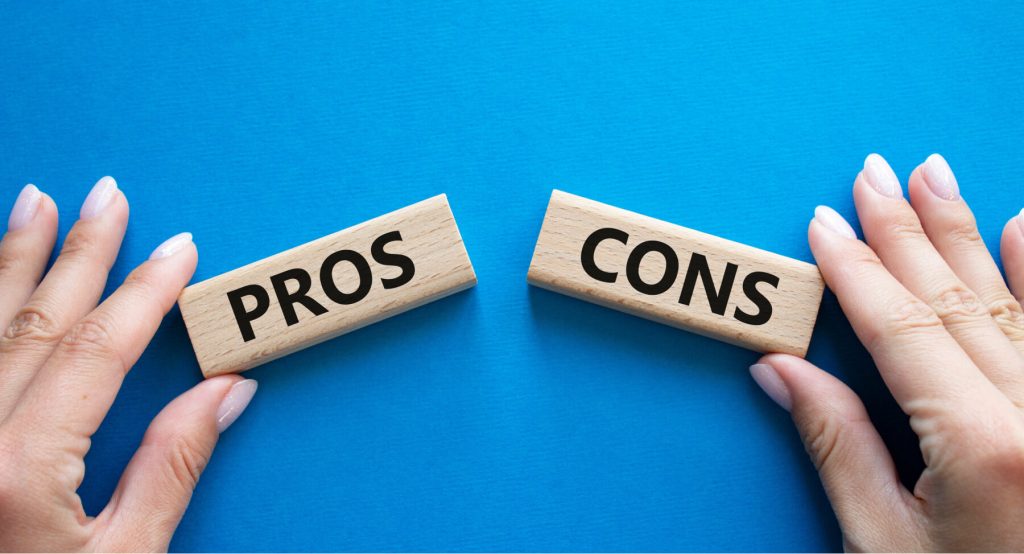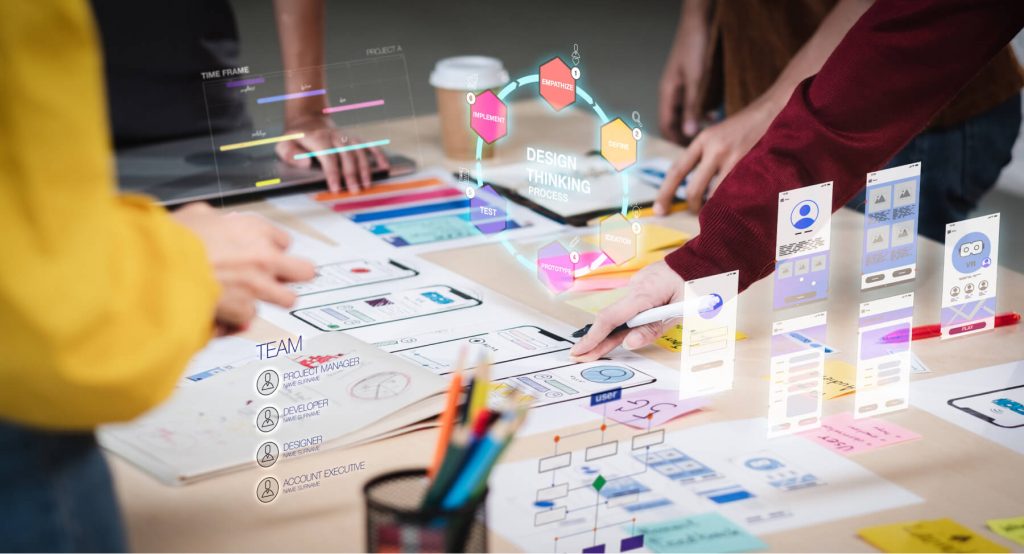Let’s start by looking at the options for hiring designers. Of course, you can think of different variations and combinations, but there are a few basic types.
- Full-time specialist. Works constantly in the office. Often – on a salary.
- Freelancer. He is invited to work on a project-by-project basis. Completed the project, not the fact that he will take the next one because he works with many customers.
- Agency. A designer team works with only one studio, or most of them only with one studio, but is located remotely.
The combinations can be different, and each studio decides for itself which one to choose. But now, in a crisis, when it is necessary to make only the right decisions, every month, the downtime of a full-time designer threatens severe financial losses for the business. At the same time, freelance failures can affect the reputation of a company. Everyone chooses for himself.
Choose your character: PROS and CONS of each option

Each of these types has its pros and cons. Let’s dwell on each
Fulltime specialist on staff
PROS:
- Easily schedule projects and meet deadlines
- Promptly make urgent edits
- Convenient for technical support in the context of minor improvements and mistakes
- Opportunity to participate in tenders
- Loyalty to your business and product
The undoubted and savvy main advantage will be that he is always at hand in the office. Managers do not worry that the designer is lost and cannot make urgent changes in the project. Technical support can always count on him with the introduction of minor adjustments to already launched projects. It is easy to schedule time, and thanks to this, it is easy not to waste time. A full-time employee can be asked to stay late, work longer on the deadline, and know that his refusal will let the team down, is likely to agree. Thus, saving the studio from the deadline disruption. Such a designer can be used on tendering projects when you know that you can be wasted. Still, thanks to the office employee, you have the resources, and you are ready to risk them to show the studio well. Business projects, presentations, etc. – everything is done well by the in-house designer. In general, an excellent feeling of security, calmness, and reliability of such an employee in the office is created.
CONS:
- Salary work
- Emotional burnout
- It is difficult to find a suitable specialist in small towns
- Training of specialists to fall on your shoulders
The first is the salary. There are projects. There are no projects – you have to pay the designer compensation. It is unfortunate when there are no projects – then this is a direct expense for the business. It is a pity to part with a designer, especially if he has custom skills, but spending a lot of money every month is also unpleasant.
You can work according to the design scheme, but then there are great chances that the work will be done blunder – to pass it. It is also unclear how to pay for tender projects and minor improvements for technical support. Plus, when there will be no work, the employee will certainly receive a small salary and either leave on his own or look for a freelance job, which is also wrong.
The second big drawback is creative burnout. A person who has come to the same office for several years receives the same salary with a slight increase every six months – he loses the incentive to do cool things. This requires a lot of work to motivate such employees, plus there should be good self-motivation and self-discipline. But, as practice shows, even very disciplined and motivated employees burn out, and then the studio receives projects of the same type, which are no longer even funny to publish in the portfolio – they are so similar to one another. It’s especially bad when this happens to an illustrator. He seems to be watching cool work on Revision and Behance, trying to do the same, but it comes out sadly. This is sad.
Another disadvantage, it is more suitable for regional business – designers in an office in the region often grow up and leave for the capital. Therefore, you can be prepared that the designer is in your office for a short time. Typically, the life of such a designer is no more than a year and a half, and then if you’re lucky. The study fills up a portfolio, and their creative soul strives for metropolitan parties of interest.
Another minus, closely related to the previous one. Since many designers leave for Moscow and St. Petersburg, it is very difficult for a regional business to find a good specialist in the office. In 90 percent of cases, he has to be trained, investing his time, efforts in quality control, drawing up concepts and recommendations. And as soon as they have learned, they immediately leave. And it turns out very unpleasant.
Imagine you need to part ways with a designer who has worked for you for 5 years. When you first started, it was a creative designer who was eager for ideas and a desire to do cool things. With it you have made your best sites. But then the situation changed. Firstly, the industry is changing, and if earlier customers were ready to invest in beautiful and creative solutions, now only large brands can afford to spend on promotional illustrations. You increasingly began to work with front-end solutions, moving to information design. Therefore, there are fewer and fewer projects that you could give to our in-house illustrator.
Those projects that you gave were done for quite a long time, due to the fact that the person burned out, and there were times when the work was done for 3-4 months and the total salary payment exceeded the cost of the design on the project. During the period when orders for there was no illustration, the studio continued to pay the salary and, as mentioned above, it was a direct expense of the business. For the last 5 months, the business has only had 1 order for an illustrative site. You analyzed the current situation and made the difficult decision to part with the employee. For two main reasons: a large salary (respectively, a large expense) and uncreative work due to emotional burnout. It was hard because he became almost a family for you, but nonetheless. Sometimes you need to periodically update your design lineup to add variety to your business portfolio.
One head of a large agency, included in the TOP10 of many ratings, said that once they conspired to leave 3 designers. At first, they could not get rid of shock and fear, but then, realizing that they had just lost their colossal monthly expense, and it’s also good to work with freelancers on a project-by-project basis – they exhaled freely and were only glad that this was the situation.
Freelancer

PROS:
- Project-by-project payment, projected consumption, no unnecessary expenses
- Diversity in the portfolio of projects
- Large base of specialists
Of the advantages, one can note the relatively small expense of the studio for a freelancer, or at least payment upon the fact of the work done. That being said, it is definitely better to work with trusted freelancers who will not disappear after receiving advance payment. Also, if you work with several freelancers, you can achieve the diversity in the portfolio, which was mentioned earlier and which is difficult to achieve by working for a long time with a designer on the staff. In addition, if you practice this style of work in the agency for a long time, then after a while, a rather large base of designers working in various styles will accumulate, which can be attracted depending on the task of the project.
CONS:
- Fear for deadlines
- High-quality studio work is not cheap
- Paid improvements
- Freelancers are not known for loyalty to your business or product
The very first and biggest disadvantage is deadlines. Freelancers are people whose grandmother dies ten times a month, grandfather is sick, they are killed by the worst flu infection, and it is for them that the universe turns off the electricity every week. The biggest disadvantage of freelancers is instability. Giving a project, sending an advance payment, you seem to start playing Russian roulette – lucky/unlucky. If everything goes smoothly, then the designer will have time, if not, then the failure at the studio, and it is she who takes the rap in front of the customer. From experience – even the most proven freelancers fuck. And their fucking is hard to predict. Another disadvantage is the relatively high prices for the work of high-quality freelancers – for example, for a package of all pages of a corporate website, you may be asked for $ 2000-2500.
Another disadvantage is paid improvements. If the client is stubborn and does not want to accept the layout, then he often says that he will if we add this picture here and repaint this block. The studio usually agrees and makes edits for free, and the freelancer usually asks for money, because this was not in the TOR. It seems to be fair, but still unpleasant. Here either take a tough stance towards the customer, and this is fraught with conflict and accusations of the studio in the lack of loyalty, or pay extra to the freelancer, which also inflates the already inflated budget for the freelancer. A rare minus – a freelancer can see that the project is hemorrhoid and simply abandon it. And then what to do for a business that does not have a full-time designer is unclear.
Our advice – we work only with trusted freelancers, from whom you know what to expect, and only when it is really necessary. You can give small design work to a freelancer or try what you like, but at the same time, there is always a safety net in the form of a full-time designer. We do not recommend working exclusively with freelancers in order to avoid a situation when the deadlines are lost, and the designer has disappeared or did the wrong thing, and you cannot give an order to another designer. It is better not to allow such a fail. Either a proven freelancer or a safety net.
Agency

This is a great example, which has almost no drawbacks, but many advantages. We will give an example of a spherical device in a vacuum, and you decide for yourself what are the pros and cons for you. Imagine that your first experience with an agency develops according to the following scenario: a team of external designers (with whom you have never met) worked for 3 years. The work was organized as follows – the team works from a location convenient for them, but full time. He goes to work at 10 am and leaves at 6 pm or, depending on his biorhythms, but it is imperative that at least 3 hours of the designer’s working time fall on the active time of the business in order to solve promptly current tasks, set priorities, consult on customer amendments, discuss the concept of a new project, etc. These designers had pre-agreed conditions in the contract or project payment, whichever is more convenient for you. You pay upfront as soon as the project starts, and postpay when it ends. You did not pay extra for edits, sometimes you redrawn the layouts several times, because they did not go through the quality control of the business, minor technical support was done within the framework of the contract.
PROS:
- The same as a full-time designer, only he does not see in your office
- Loyalty to your business and projects
- Joy for technical support in the text of edits
- Edits and changes are made promptly
- Project-by-project payment
- Compliance with deadlines and schedules
- Lack of expenses for equipment licensed software, training, and search for specialists
This is an almost permanent designer who works with the studio all day long. The issue is solved with edits, finishing touches, minor technical support – at no extra cost. Per-project payment, and therefore only the expense for real projects in business, without paying for the designer’s downtime. Time scheduling, not scrapping deadlines, keeping deadlines. You can do business projects for a small fee. Of the previously relevant advantages – you do not have to pay for expensive licensed software, now this plus is no longer relevant because there is a monthly fee for using design tools, for example, a license for Photoshop, etc.
CONS:
- Possible inconveniences with the work schedule
- Inability to track the exact hours of operation on the time tracker
In fact, a business, especially a regional one, it is difficult to use only one method of hiring a designer, if it is not option number 3. You have been using only this method for a long time, and it suits you. But finding such people is very difficult and very lucky if it works out. Responsible, disciplined people who can deliver a quality product for a long time. Therefore, the most common types are 1 and 2.
Large metropolitan businesses can keep designers on a salary; they have good access to quality performers who come from the regions. Often the salary, in this case, can be even small because designers will be ready to work in a brand agency on interesting projects. That is why big players rarely work with freelancers – or only with eminent freelancers, about whom it is known in advance that they will do it well. Or the agencies in the capital subcontract entire regional studios. And the large flow of incoming applications for projects provides an opportunity to pay good salaries to designers or subcontract to agencies.
Regional businesses, on the other hand, have to spin and combine. Look for nuggets among the remaining designers in the city, teach them and try to make sure that the employee stayed with them as long as possible, keeping him with salaries, ideas, the opportunity to realize his creative potential in full. Well, in order to diversify the business portfolio, periodically give some projects to freelance, but at the same time insure with a full-time designer if the deadline is thwarted and the failure is close. It is necessary to weigh all the pros and cons of each type and think about what is optimal for the current situation of each individual business. Because now is the time to make only the right decisions.
